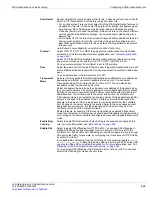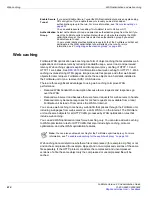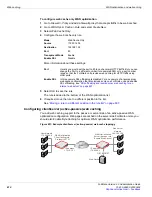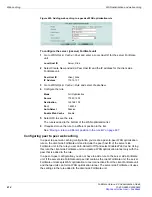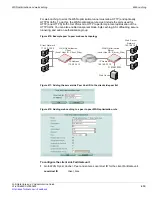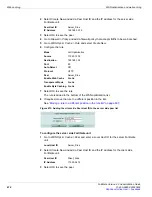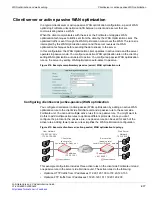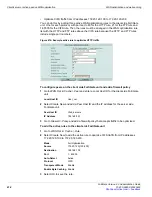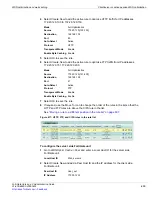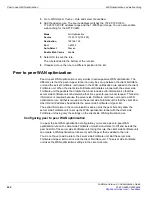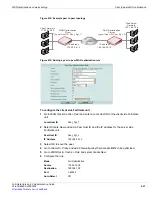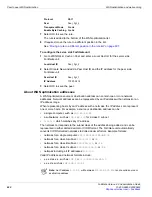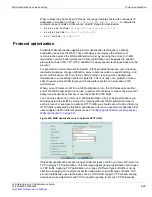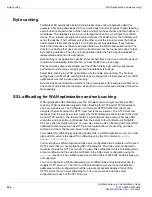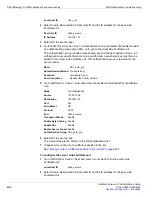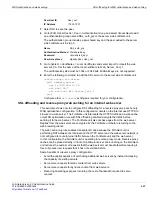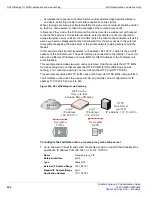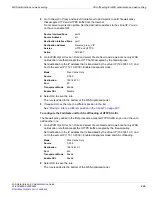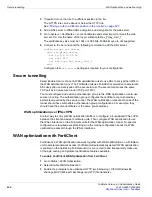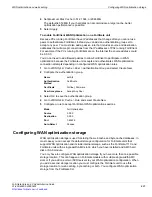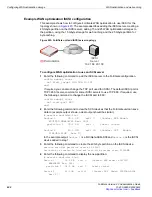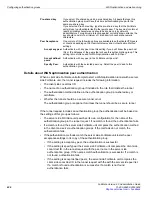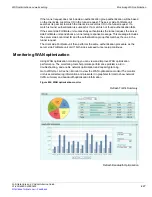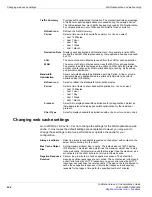
WAN optimization and web caching
Protocol optimization
FortiGate Version 4.0 Administration Guide
01-400-89802-20090424
623
When representing hosts by an IP Range, the range indicates hosts with continuous IP
addresses in a subnet, such as
192.168.1.[2-10]
, or
192.168.1.*
to indicate the
complete range of hosts on that subnet. Valid IP Range formats include:
•
x.x.x.x-x.x.x.x, such as
192.168.110.100-192.168.110.120
•
x.x.x.[x-x], such as
192.168.110.[100-120]
•
x.x.x.*, such as
192.168.110.*
Protocol optimization
FortiGate WAN optimization applies protocol optimization techniques to optimize
bandwidth use across the WAN. These techniques can improve the efficiency of
communication across the WAN optimization tunnel by reducing the amount of traffic
required by communication protocols. Protocol optimization can be applied to specific
protocols such as CIFS, FTP, HTTP, and MAPI to apply specific techniques based on the
protocol.
For example, Common Internet File System (CIFS) provides file access, record locking,
read/write privileges, change notification, server name resolution, request batching, and
server authentication. CIFS is a fairly “chatty” protocol, requiring many background
transactions to successfully transfer a single file. This is usually not a problem across a
LAN. However, across WAN latency and bandwidth reduction can slow down CIFS
performance.
When you set Protocol to CIFS in a WAN optimization rule, the FortiGate units at either
end of the WAN optimization tunnel use a number of techniques to reduce the amount of
background transactions that occur over the WAN for CIFS traffic.
You can only select one protocol in a WAN optimization rule. For best performance you
should separate the traffic by protocol by creating different WAN optimization rules for
each protocol. For example, to optimize HTTP traffic you should set port to 80 so that only
HTTP traffic is accepted by this WAN optimization rule. For an example configuration that
uses multiple rules for different protocols, see
“Configuring client/server (active-passive)
Figure 420: WAN optimization rule to optimize HTTP traffic
If the WAN optimization accepts a range of different types of traffic, you can set Protocol to
TCP to employ TCP optimization. This technique applies general optimization techniques
to TCP traffic. Applying TCP optimization to a range of different types of traffic is not as
effective as applying more protocol-specific optimization to specific types of traffic. TCP
protocol optimization uses techniques such as TCP SACK support, TCP window scaling
and window size adjustment, and TCP connection pooling to remove TCP bottlenecks.
Summary of Contents for Gate 60D
Page 705: ...www fortinet com...
Page 706: ...www fortinet com...

